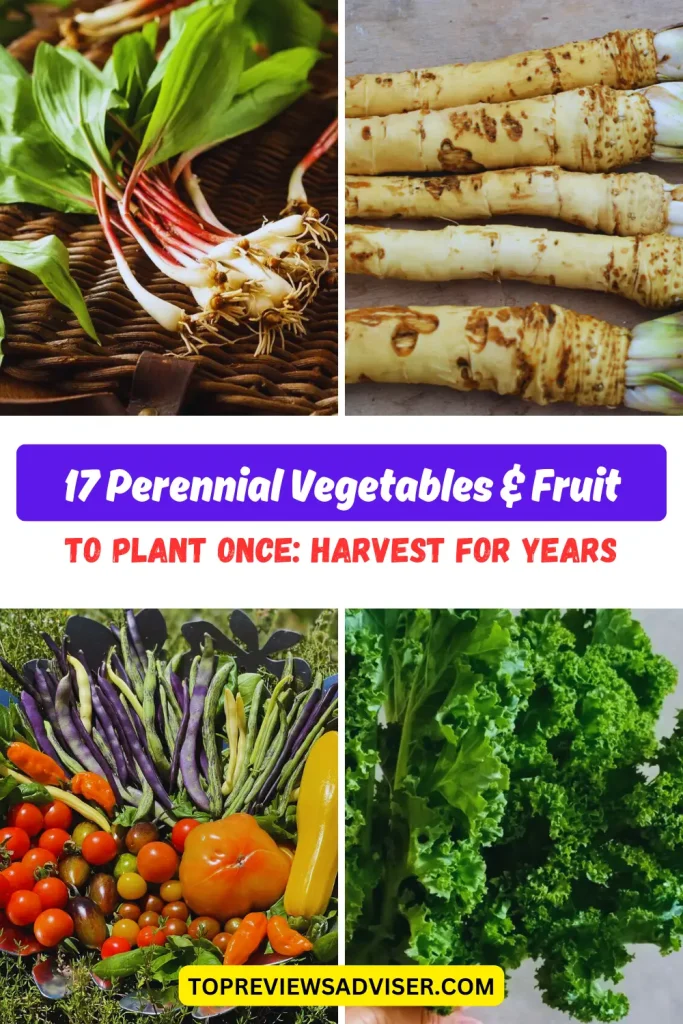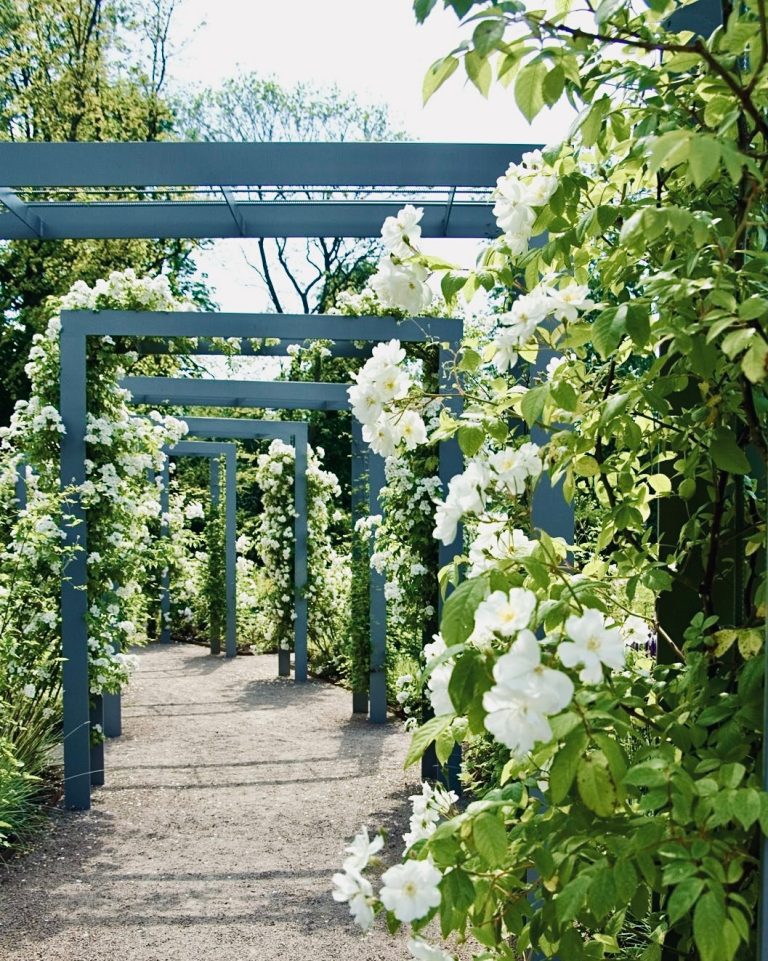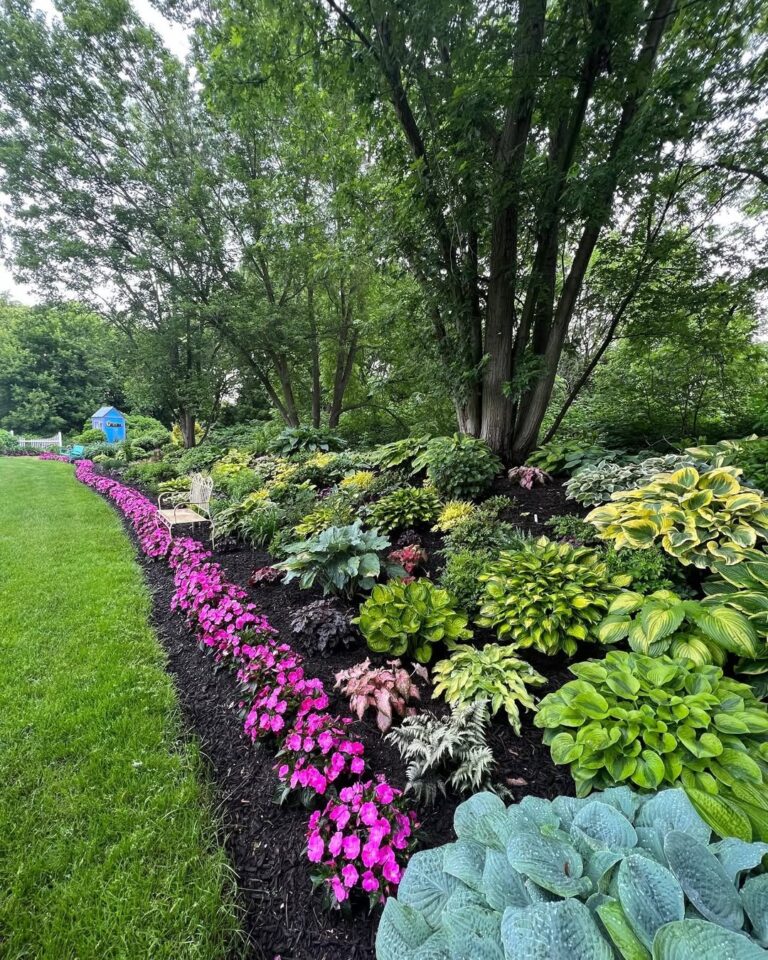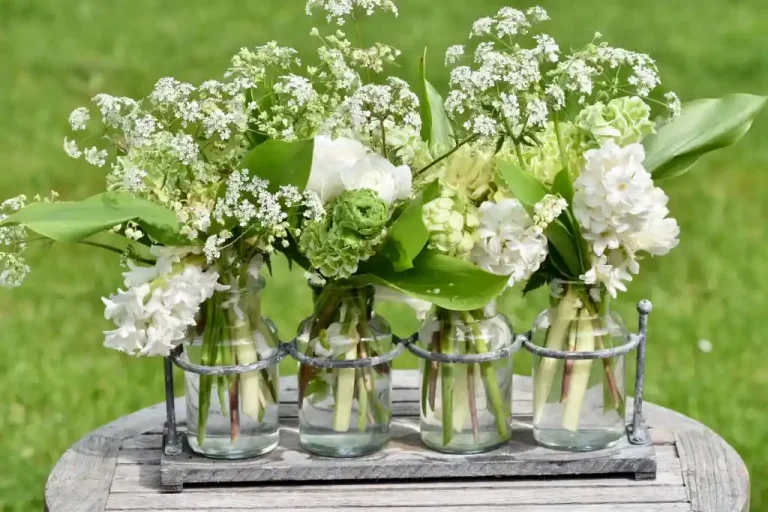17 Perennial Vegetables & Fruits to Plant Once: Harvest for Years
In the realm of gardening and agriculture, perennial plants are the unsung heroes that keep on giving year after year. Unlike annual crops that need to be replanted each season, perennial vegetables and fruits persist for multiple years, providing a continuous harvest with minimal effort. These plants have garnered increasing attention from both seasoned gardeners and beginners due to their sustainability, resilience, and the abundance they offer.

Why Choose Perennial Plants?
The decision to incorporate perennial plants into your garden comes with a multitude of benefits. Firstly, it contributes to environmental sustainability by reducing the need for frequent tilling and replanting, thus minimizing soil erosion and preserving soil health. Additionally, perennial crops require less water and fertilizer compared to annuals, making them a more eco-friendly choice.
From a practical standpoint, growing perennial vegetables and fruits saves both time and effort. Once established, these plants require minimal maintenance, freeing up your time for other gardening tasks or leisure activities. Furthermore, their longevity ensures a consistent food supply, even in adverse weather conditions or during periods of neglect.
17 Perennial Vegetables and Fruits
1. Asparagus
Asparagus, a member of the lily family, is prized for its tender spears and delicate flavor. It thrives in well-drained, sandy soil and requires full sun for optimal growth. Asparagus plants can continue to produce a harvest for up to 20 years if properly cared for. Harvesting should begin when the spears are 6-8 inches tall and should be done carefully to avoid damaging the crowns.
2. Rhubarb
Rhubarb is a hardy perennial that belongs to the Polygonaceae family. It prefers cool climates and rich, well-drained soil with plenty of organic matter. Rhubarb stalks are the edible part of the plant and can be harvested from spring to early summer. The tart flavor of rhubarb pairs well with sweet fruits in desserts like pies, crisps, and jams.
3. Artichokes
Artichokes are thistle-like perennials native to the Mediterranean region. They require a long growing season and thrive in mild, Mediterranean climates. The edible portion of the artichoke is the immature flower bud, which is harvested before it opens. Artichokes can be steamed, boiled, or grilled and served with butter, aioli, or vinaigrette.
4. Horseradish
Horseradish is a perennial root crop prized for its pungent flavor and culinary versatility. It grows best in rich, moist soil and prefers cool climates. Horseradish roots can be harvested in the fall or spring and grated to make a spicy condiment. The strong flavor of horseradish pairs well with meats, seafood, and sauces.
5. Strawberries
Strawberries are perennial plants that belong to the Rosaceae family. They prefer well-drained soil and full sun but can tolerate some shade. Strawberry plants produce sweet, juicy fruits from spring to early summer, depending on the variety. They can be eaten fresh, added to salads, or used in desserts like shortcakes, pies, and jams.
6. Raspberries
Raspberries are members of the Rosaceae family and are closely related to strawberries. They prefer rich, well-drained soil and full sun but can tolerate some shade. Raspberry plants produce sweet-tart berries from summer to early fall, depending on the variety. Raspberries can be eaten fresh, frozen, or used in desserts, preserves, and smoothies.
7. Blueberries
Blueberries are perennial shrubs that belong to the Ericaceae family. They prefer acidic, well-drained soil and full sun but can tolerate some shade. Blueberry bushes produce antioxidant-rich berries from late spring to early summer, depending on the variety. Blueberries can be eaten fresh, frozen, or incorporated into baked goods like muffins, pancakes, and pies.
8. Blackberries
Blackberries are closely related to raspberries and belong to the Rosaceae family. They prefer well-drained soil and full sun but can tolerate some shade. Blackberry bushes produce sweet-tart berries from summer to early fall, depending on the variety. Blackberries can be eaten fresh, added to salads, or used in desserts, jams, and syrups.
9. Grapes
Grapes are perennial vines that belong to the Vitaceae family. They prefer well-drained soil and full sun and thrive in warm, Mediterranean climates. Grapevines produce sweet, juicy berries from late summer to early fall, depending on the variety. Grapes can be eaten fresh, dried into raisins, or pressed into juice or wine.
10. Apples
Apples are perennial trees that belong to the Rosaceae family. They prefer well-drained soil and full sun and thrive in temperate climates. Apple trees produce crisp, flavorful fruit from late summer to early fall, depending on the variety. Apples can be eaten fresh, juiced, or used in baking, cooking, and cider making.
11. Pears
Pears, members of the Rosaceae family, are another popular perennial fruit tree. They prefer well-drained soil and full sun, similar to apples, and produce sweet and juicy fruit in late summer to early fall. Pears can be eaten fresh, canned, or used in cooking and baking, adding a delightful flavor to various dishes.
12. Figs
Figs are Mediterranean natives that thrive in warm climates and well-drained soil. These deciduous trees produce sweet and succulent fruits, which can be eaten fresh or dried. Figs are versatile in the kitchen, used in both sweet and savory dishes, such as salads, desserts, and preserves.
13. Elderberries
Elderberries are resilient perennial shrubs belonging to the Adoxaceae family. They prefer moist, well-drained soil and full sun to partial shade. Elderberries produce clusters of small, dark berries in late summer to early fall, known for their immune-boosting properties. They can be used in syrups, jams, wines, and herbal remedies.
14. Goji Berries
Goji berries, originating from Asia, are nutrient-rich perennials belonging to the Solanaceae family. They thrive in well-drained soil and full sun, producing small, red berries that are dried and eaten as a snack or used in teas, smoothies, and herbal remedies. Goji berries are known for their antioxidant properties and health benefits.
15. Chives
Chives are perennial herbs related to onions and garlic, belonging to the Amaryllidaceae family. They prefer well-drained soil and full sun to partial shade. Chives produce slender, hollow leaves with a mild onion flavor, often used as a garnish or flavoring in salads, soups, omelets, and dips.
16. Mint
Mint, a member of the Lamiaceae family, is a hardy perennial herb known for its refreshing aroma and flavor. It thrives in moist, well-drained soil and partial to full sun. Mint leaves can be harvested throughout the growing season and used fresh or dried in teas, cocktails, desserts, and savory dishes.
17. Sage
Sage, belonging to the Lamiaceae family, is an aromatic perennial herb with gray-green leaves. It prefers well-drained soil and full sun and is drought-tolerant once established. Sage leaves have a savory flavor with hints of earthiness and are commonly used in culinary dishes such as stuffing, sauces, and roasted meats.
How to Grow and Care for Perennial Plants
To ensure the success of your perennial garden, it’s essential to provide the right growing conditions and care for your plants. Most perennial vegetables and fruits thrive in well-drained soil and full sunlight, although some species may have specific requirements. Regular watering, mulching, and occasional fertilization will promote healthy growth and abundant yields.
Pruning is another critical aspect of perennial plant care, as it helps maintain plant shape, remove dead or diseased growth, and stimulate new growth. Each species may have different pruning requirements, so it’s essential to research specific guidelines for the crops you’re cultivating.
Harvesting Perennial Vegetables and Fruits
The timing of harvest varies depending on the type of perennial plant and the desired maturity of the fruits or vegetables. Generally, it’s best to harvest fruits when they are fully ripe but still firm, while vegetables are often harvested when they reach their optimal size and color.
When harvesting perennial crops, it’s essential to use sharp tools to avoid damaging the plants and to handle the produce gently to prevent bruising. Proper harvesting techniques not only ensure a bountiful harvest but also promote the continued health and productivity of your perennial plants.
Cooking and Utilizing Perennial Produce
One of the joys of growing perennial vegetables and fruits is the opportunity to savor their fresh flavors in a variety of culinary creations. From savory dishes to sweet treats, there are endless possibilities for incorporating perennial produce into your meals.
For example, perennial herbs like chives, mint, and sage can be used to add depth and complexity to salads, soups, and sauces. Fruits like strawberries, raspberries, and blueberries are perfect for making jams, pies, and smoothies, while vegetables like asparagus and artichokes shine when roasted or grilled.
Overcoming Challenges
While perennial plants offer numerous advantages, they are not immune to challenges such as pests and diseases. Common pests that may affect perennial crops include aphids, caterpillars, and fungal diseases like powdery mildew and botrytis.
To mitigate these risks, it’s essential to practice good garden hygiene, such as removing plant debris and weeds, and monitoring your plants regularly for signs of pests or diseases. Additionally, cultural practices like crop rotation and companion planting can help deter pests and promote plant health naturally.
Long-Term Benefits of Growing Perennial Crops
The decision to invest in perennial vegetables and fruits yields long-term benefits that extend beyond the garden. Economically, perennial plants offer a higher return on investment compared to annual crops, as they require less input in terms of labor, water, and fertilizer while providing a continuous harvest for multiple years.
From a health perspective, incorporating perennial produce into your diet contributes to overall well-being by providing a diverse array of vitamins, minerals, and antioxidants. By cultivating a perennial garden, you not only nourish your body but also nurture the land for future generations to enjoy.
Conclusion
Planting perennial vegetables and fruits is a rewarding endeavor that offers a multitude of benefits for both the gardener and the environment. From the sustainability and resilience of perennial plants to the abundance and flavor they provide, there are countless reasons to embrace these long-lived crops in your garden.
By selecting from the diverse array of perennial vegetables and fruits available, you can create a thriving garden ecosystem that sustains you year after year with minimal effort. So why wait? Start planning your perennial garden today and reap the rewards for years to come.





